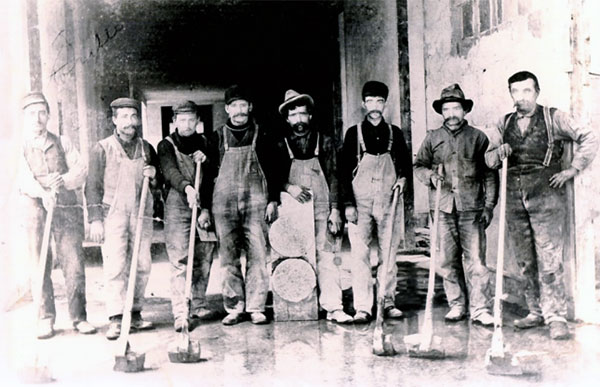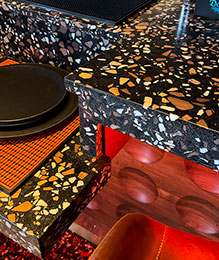


 While today’s generation of terrazzo is still poured-in-place on the job site, and as durable as ever, its reputation
has lagged far behind the reality of the industry. The evolution of the installation process has come a long way since
those century-old floors were first installed. And with these advances, comes very good news for the GC in terms of
costs, time, space and headaches.
While today’s generation of terrazzo is still poured-in-place on the job site, and as durable as ever, its reputation
has lagged far behind the reality of the industry. The evolution of the installation process has come a long way since
those century-old floors were first installed. And with these advances, comes very good news for the GC in terms of
costs, time, space and headaches.
 Not only has terrazzo installation become simpler, cleaner and cheaper, its design capacity has expanded
exponentially. Over recent decades, the terrazzo industry’s large-scale shift to epoxy from traditional sand-cushion
has dramatically lowered costs while playing a key role in the several game-changing improvements in the process.
Not only has terrazzo installation become simpler, cleaner and cheaper, its design capacity has expanded
exponentially. Over recent decades, the terrazzo industry’s large-scale shift to epoxy from traditional sand-cushion
has dramatically lowered costs while playing a key role in the several game-changing improvements in the process.